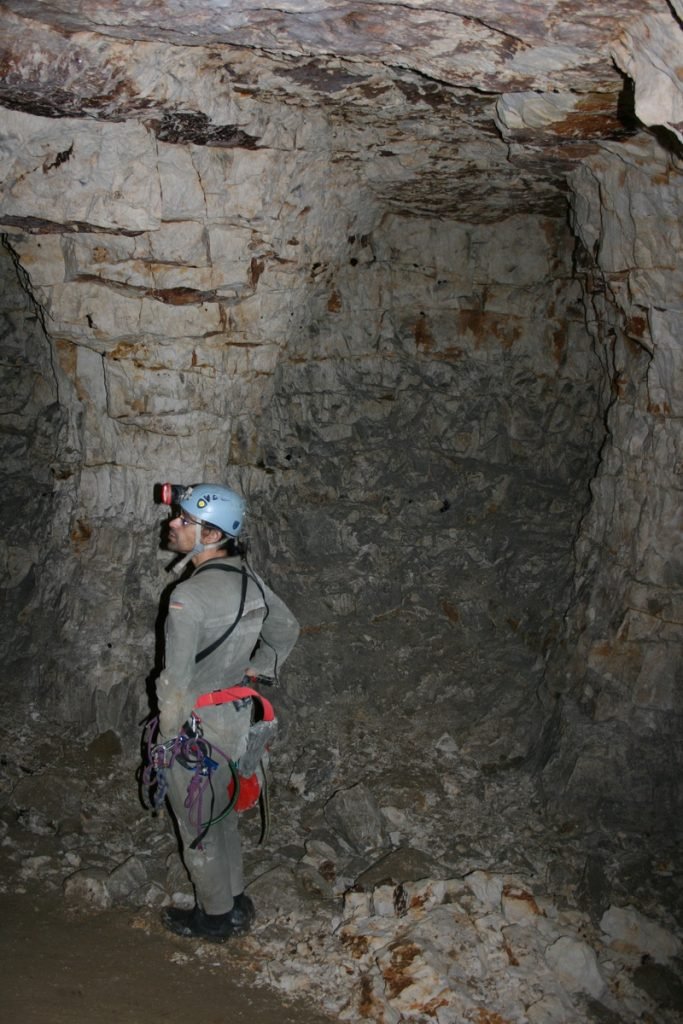Hangmans Wood Denehole
The site was a medieval chalk mine, and the ground here is a few feet of flood gravels covering about 50ft of the Thanet Sands, which lie on the Upper Chalk with its distinctive black flints. In many places, the roof breaks through into the beds above showing the original land surface when the chalk was exposed and eroded and then recovered by the sea with further deposition. The lowest part pf the Thanet Sands is a bed of about 1-foot thickness called the ‘Bullhead Bed’. This consists of iron rich clays and very large lumps of flint eroded out of the chalk. It is also possible to see this in sections in places showing that the chalk surface itself had many solution holes within it that have subsequently been filled by these later Tertiary deposits.
The deneholes consist of a circular shaft of about 5ft diameter sunk through the Thanet Sand until it meets the chalk. Then a series of chambers, usually six radiate away from the central shaft. The chalk was hauled up in buckets or bags by ropes which have left distinct marks on the edges of the shaft where they have sawn into the leading edges of the chamber roofs. Once it gets too far away from the shaft to haul the chalk like this another identical denehole is sunk close by. At some point in the not too distant past the various chambers have been linked together by crawls and low passages to make a continuous network. In some places, it is possible to see where a drill of some sort has been used to probe ahead to see if there are voids worth digging to.
Location: Essex
Condition: Good
Date Of Visit: 22/07/07











